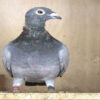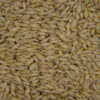How Dust and Ammonia Impact Pigeon Lung Health
How Dust and Ammonia Impact Pigeon Lung Health
Racing pigeons are prized for their endurance, speed, and resilience—but like all athletes, they need the right environment to thrive. One of the most overlooked aspects of pigeon health is air quality inside the loft. Poor ventilation, dust accumulation, and high ammonia levels can seriously affect a bird’s respiratory system, leading to chronic illness and poor performance.
In this blog, we’ll break down how dust and ammonia build-up impacts the lungs of your pigeons, signs to watch out for, and the steps you can take to keep your loft clean and your flock breathing easy.
Why Respiratory Health Matters in Racing Pigeons
Pigeons rely heavily on their respiratory efficiency during flight. Unlike mammals, their lungs are fixed and don’t expand. Instead, they use a system of air sacs that push oxygen through their lungs in a unidirectional flow. This allows for incredibly efficient oxygen exchange—but it also means they’re extremely vulnerable to airborne pollutants.
When the air in your loft is polluted with dust, feathers, droppings, or ammonia fumes, your pigeons inhale these irritants directly into their lungs and air sacs. Over time, this can cause chronic inflammation, lower their oxygen uptake, and make them more susceptible to infections like Mycoplasma or Ornithosis.
The Hidden Threat of Loft Dust
Dust in a pigeon loft isn’t just dirt. It’s a mix of:
-
Feathers and down
-
Dry droppings
-
Seed husks
-
Bedding material
-
Mold spores and bacteria
When pigeons flap their wings, walk around, or feed, this dust becomes airborne and is easily inhaled. Over time, this constant exposure causes:
-
Chronic respiratory irritation
-
Air sacculitis (inflammation of air sacs)
-
Increased risk of fungal infections like Aspergillosis
-
Decreased race performance due to reduced lung capacity
How to Reduce Loft Dust
Keeping dust under control is key to preventing respiratory distress in your flock. Here’s how:
-
Use dust-free bedding: Opt for materials like wood pellets, hemp bedding, or cardboard shavings instead of straw or sawdust.
-
Regular cleaning: Clean perches, corners, and bedding at least once or twice a week.
-
Mist before cleaning: Lightly spraying the loft with water before sweeping can prevent dust from becoming airborne.
-
Feed management: Use feeders that minimize spillage and seed husk scatter.
Ammonia: A Silent Lung Damager
Ammonia is produced when uric acid from pigeon droppings breaks down. In a poorly ventilated loft, it builds up fast—especially in damp bedding or humid conditions.
Even at low levels, ammonia can:
-
Irritate the eyes, nose, and throat
-
Break down the mucosal barrier in the respiratory tract
-
Suppress the immune system
-
Make pigeons more vulnerable to bacterial and viral infections
Pigeons living in ammonia-laden environments are more likely to develop chronic respiratory disease, poor feather condition, and lower fertility.
How to Minimize Ammonia Exposure
-
Improve ventilation: Ensure there is constant airflow without causing drafts. Openings high and low on opposite sides of the loft allow stale air to escape.
-
Use absorbent bedding: Materials like wood pellets, zeolite, or dry peat moss help trap moisture and reduce ammonia production.
-
Clean droppings daily: Especially under perches and nesting boxes where waste accumulates quickly.
-
Monitor humidity: A hygrometer can help you keep track—aim for below 65% relative humidity in the loft.
-
Loft design: Sloped floors and grated areas under perches can help droppings dry faster and minimize buildup.
Symptoms of Poor Air Quality in Pigeons
Not sure if your loft’s air quality is affecting your birds? Watch for these warning signs:
-
Labored or open-mouth breathing
-
Coughing or wheezing
-
Watery or swollen eyes
-
Nasal discharge
-
Reduced flight stamina or race returns
-
Ruffled feathers or droopy posture
-
Birds avoiding certain areas of the loft (could indicate high ammonia)
Even mild symptoms can be early indicators of a serious respiratory compromise. Don’t wait—address the loft conditions immediately.
Long-Term Effects of Neglected Loft Hygiene
When dust and ammonia exposure is allowed to continue over weeks or months, pigeons can develop:
-
Chronic Respiratory Disease (CRD): Often involving Mycoplasma gallisepticum and secondary infections.
-
Aspergillosis: A fungal infection that thrives in dusty, damp lofts and is difficult to treat.
-
Ornithosis (Chlamydia psittaci): A zoonotic infection that can also pose risks to humans.
-
Reduced race performance and longer recovery times
-
Poor molting and feather quality
Tips for a Healthier, Cleaner Loft
Creating a clean, healthy loft environment is one of the best investments in your birds’ future. Here are simple, proven tips:
Install exhaust vents or fans to keep air circulating
Use disinfectants that are safe and effective on droppings
Replace bedding regularly—don’t let it stay damp
Use natural deodorizers like zeolite or baking soda to neutralize odors
Keep the loft dry with good drainage and avoid overwatering during cleaning
Inspect the loft weekly for mold, buildup, or blocked vents
Product Support: Tools to Help Reduce Dust and Ammonia
You can also use loft products designed to support respiratory health, like:
-
Anti-dust sprays or loft misters
-
Zeolite powder to absorb ammonia from droppings
-
Natural disinfectants like iodine-based sprays
-
Immune boosters and respiratory supplements (e.g., oregano oil, garlic extract)
-
Air purifiers or UV sanitizing lamps in enclosed setups
These tools work best when paired with solid cleaning habits and proper ventilation.
Don’t Wait for Symptoms—Be Proactive
By the time a pigeon shows visible signs of respiratory stress, their performance may already be compromised. Early action and preventive care are key. Start with better loft hygiene today, and you’ll see stronger, healthier, more competitive birds tomorrow.
Remember, your pigeons can’t tell you when they’re breathing poorly—but their race results, molting patterns, and energy levels certainly will.
Final Thoughts
Dust and ammonia in the loft are silent saboteurs of pigeon lung health. The good news? With regular cleaning, good ventilation, and smart bedding choices, you can dramatically reduce these risks.
Respiratory health doesn’t just affect survival—it affects speed, endurance, and success in breeding and racing. So, if you’re serious about pigeon performance, make air quality your top priority.
Your pigeons give their best in the sky give them the clean air they deserve in the loft.


